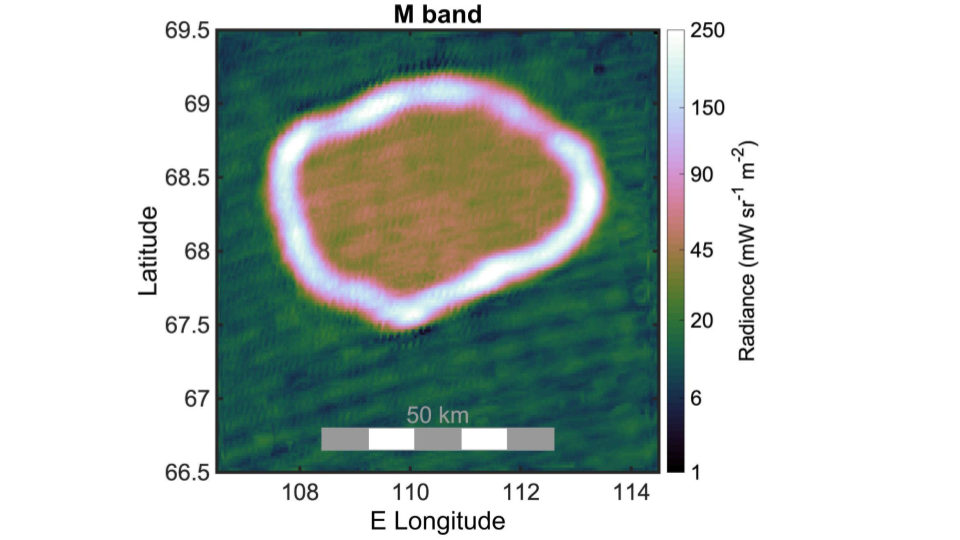
I don’t think there is an astronomer who doesn’t love a pretty high resolution image of …well… pretty much anything in space. Give me a crisp clear galaxy, or a nebula, or even a quiet frost field on another planet and I will happily stare at the pretty picture. But science… the coolest science sometimes comes from the gnarliest looking images.
Back in May and October 2023, the Juno spacecraft flew near Jupiter’s volcanic moon Io and pointed its infrared camera and Io to see what it could see… and what it saw was lava lakes that appear hottest around the edges.
The data isn’t pretty, but the story it tells is neat. It’s now thought that as much as 3% of Io’s surface is covered in molten lava lakes. Many have what could be solid shells over their central regions, and are ringed by still molten lava. Contained within high-walled caldera, these lava lakes are geologically similar to the Loko o Pele lava lake at the peak of Kilauea volcano, is due to the very behavior that gives lava lamps their name. As lava wells up, it cools in the center and then sinks down.
According to Juno co-investigator Alessandro Mura, “We now have an idea of what is the most frequent type of volcanism on Io: enormous lakes of lava where magma goes up and down. The lava crust is forced to break against the walls of the lake, forming the typical lava ring seen in Hawaiian lava lakes. The walls are likely hundreds of meters high, which explains why magma is generally not observed spilling out.”
The images used in this initial release from NASA are just the first of what should be increasingly detailed information from Juno’s additional Io flybys in December 23 and February 24. When discoveries from those datasets are published, we’ll bring them to you here on EVSN.
